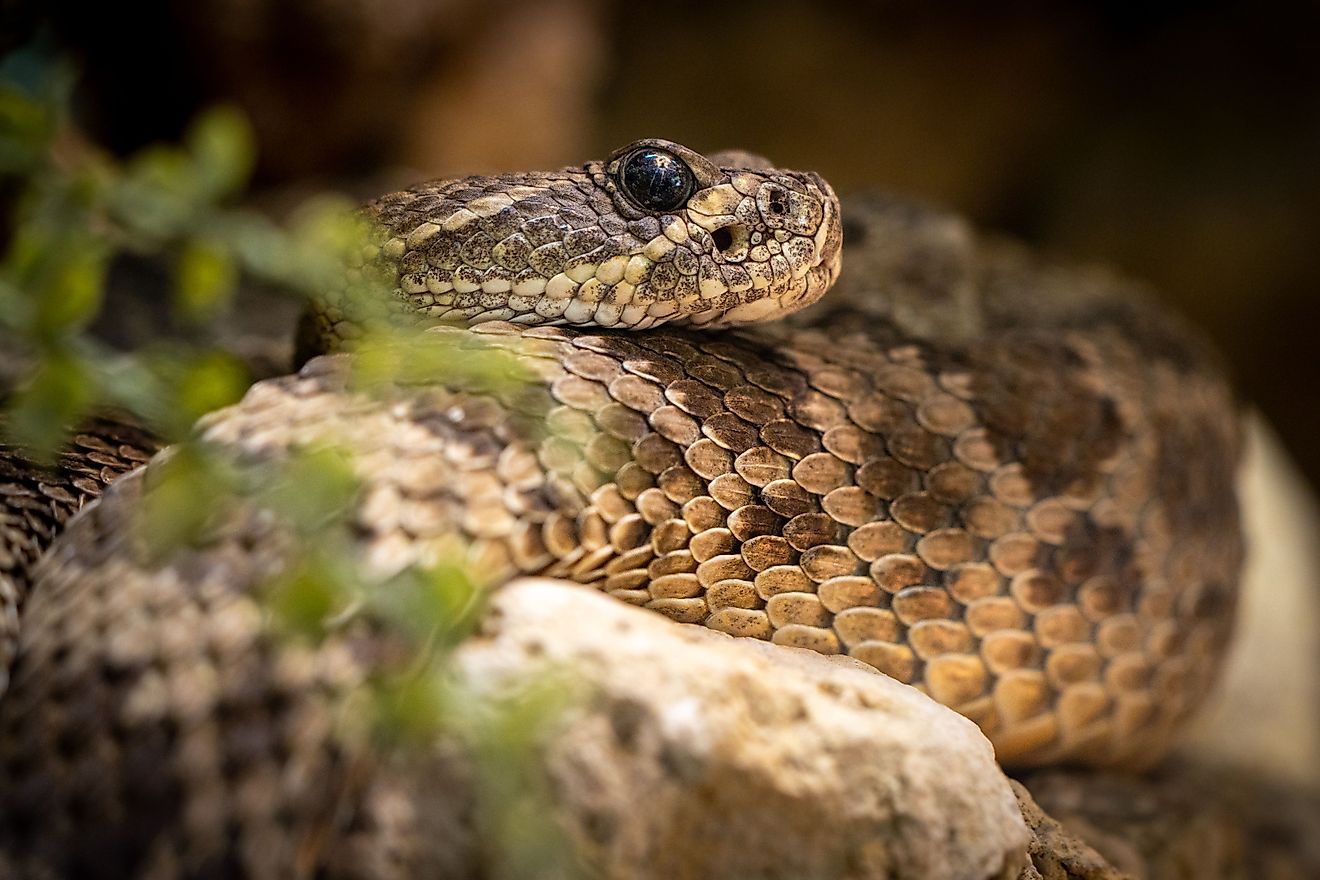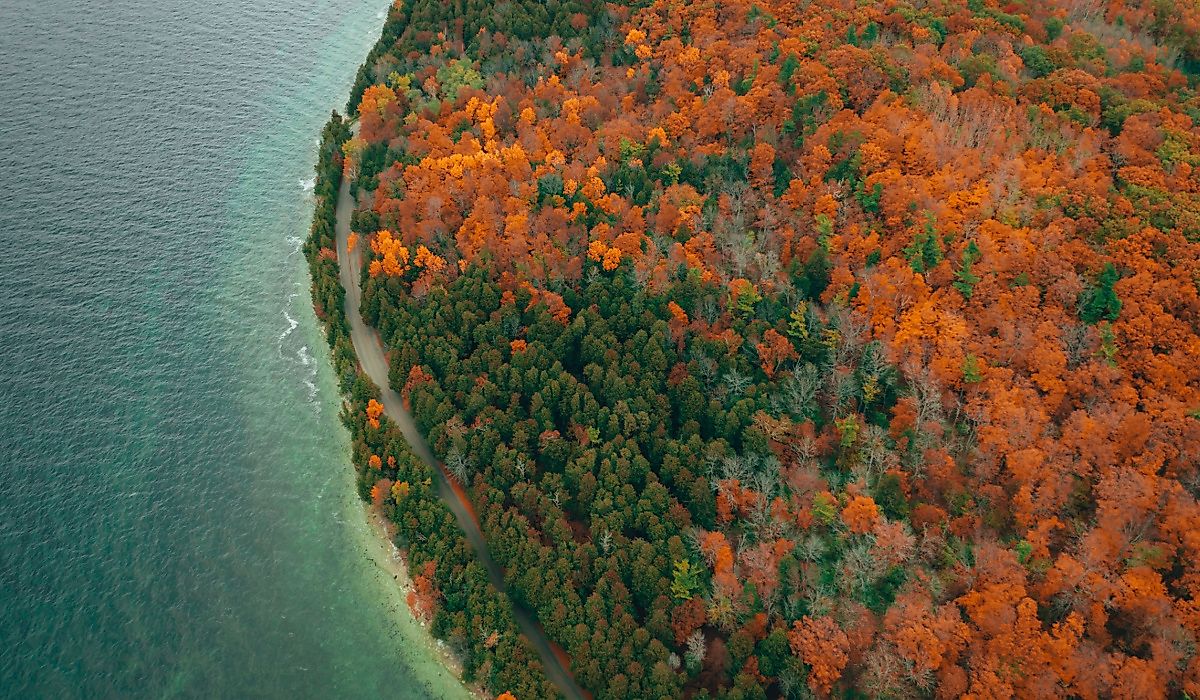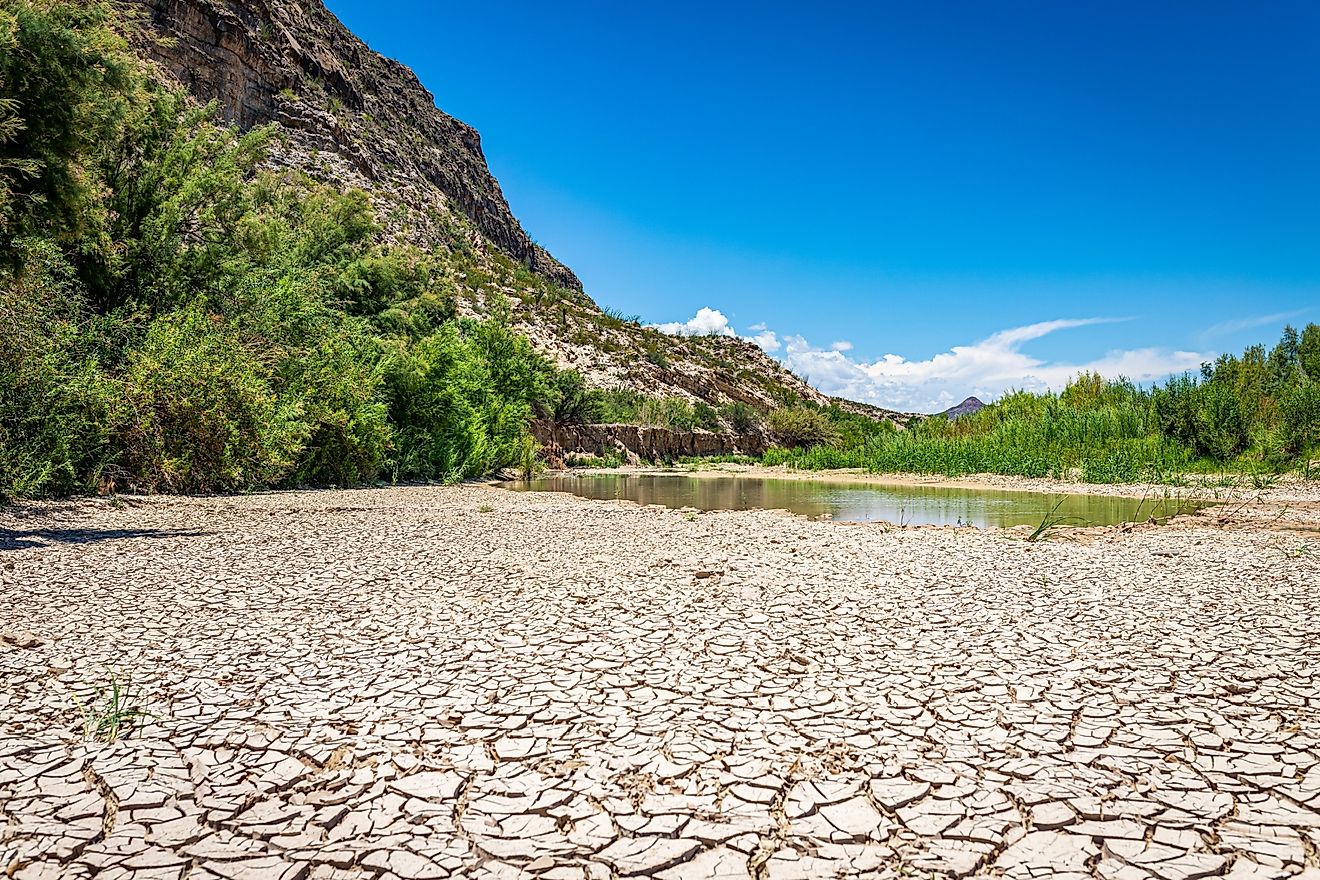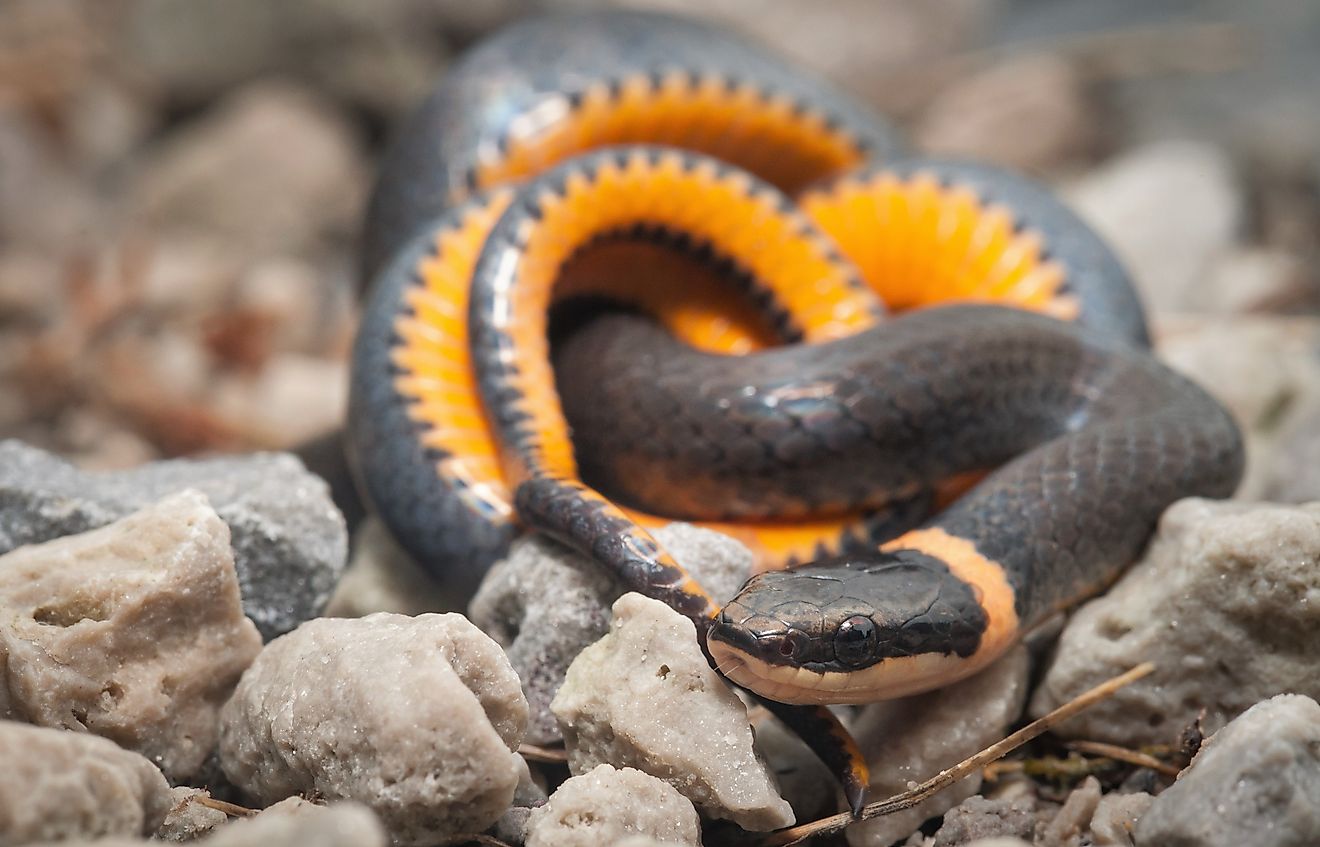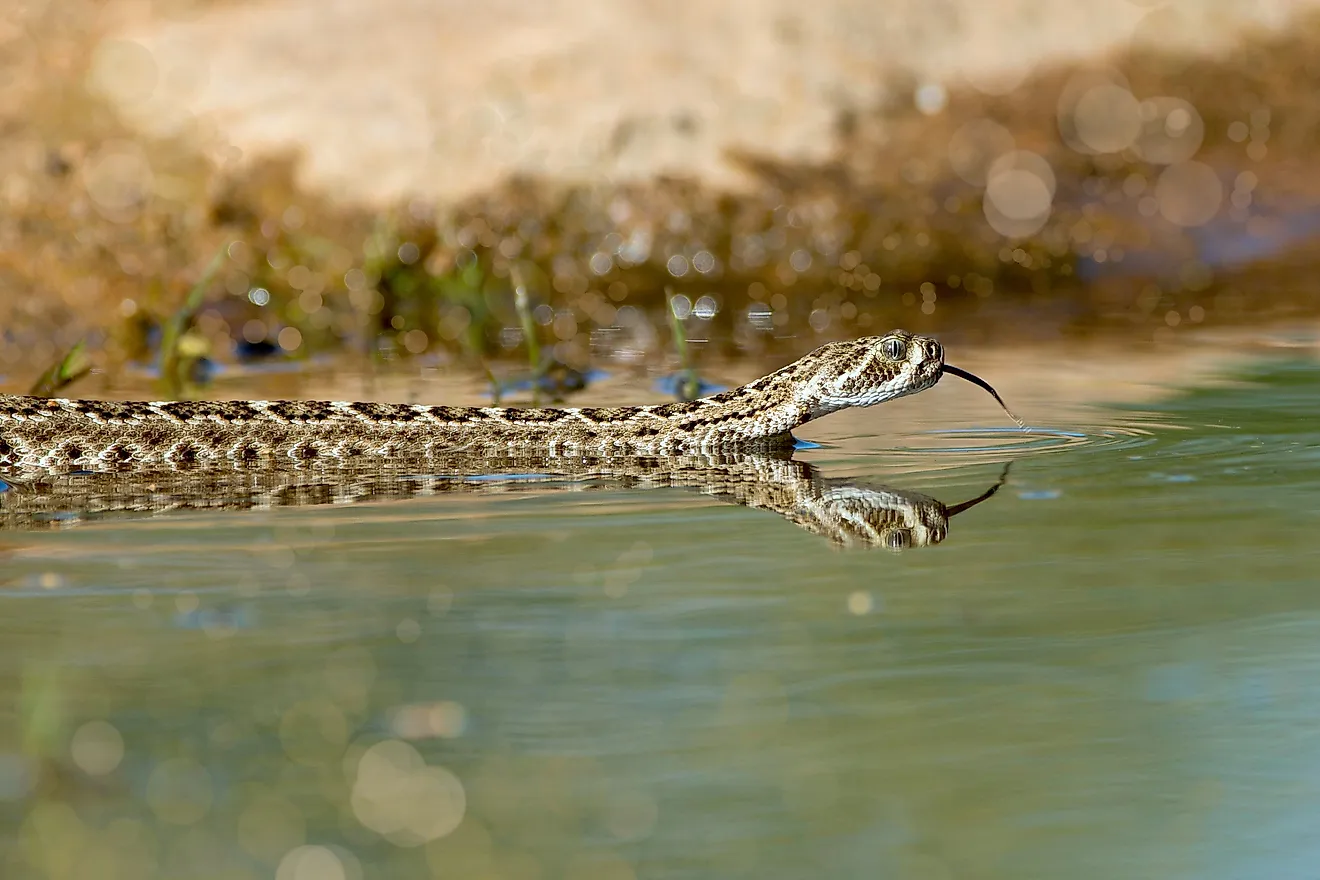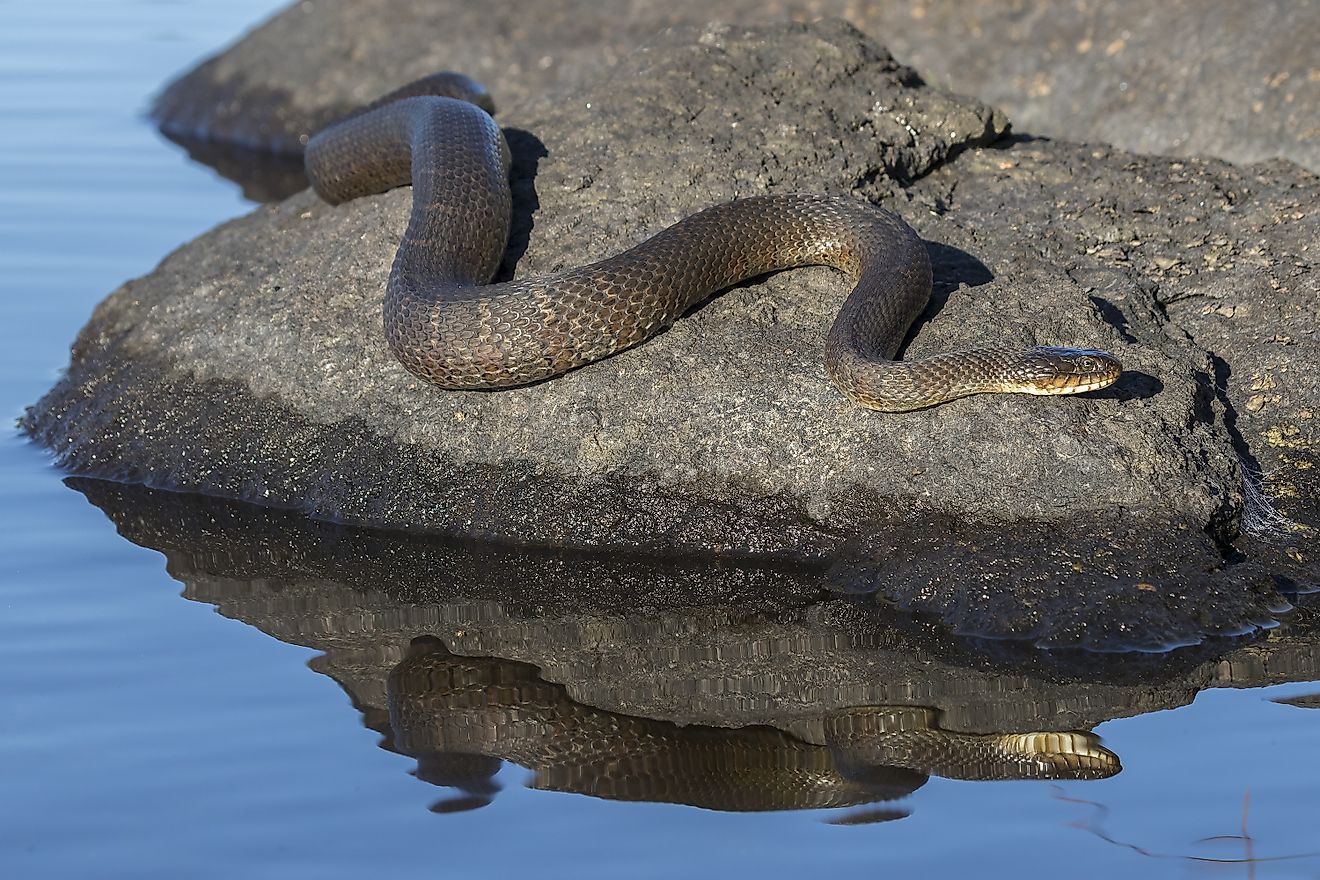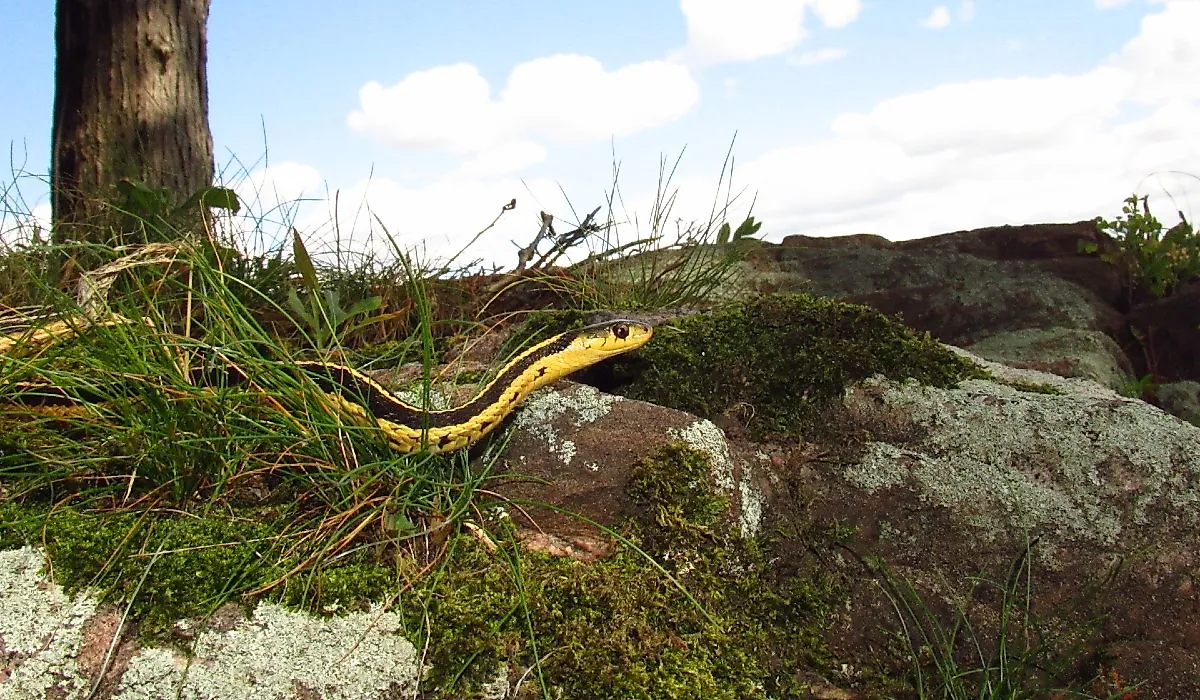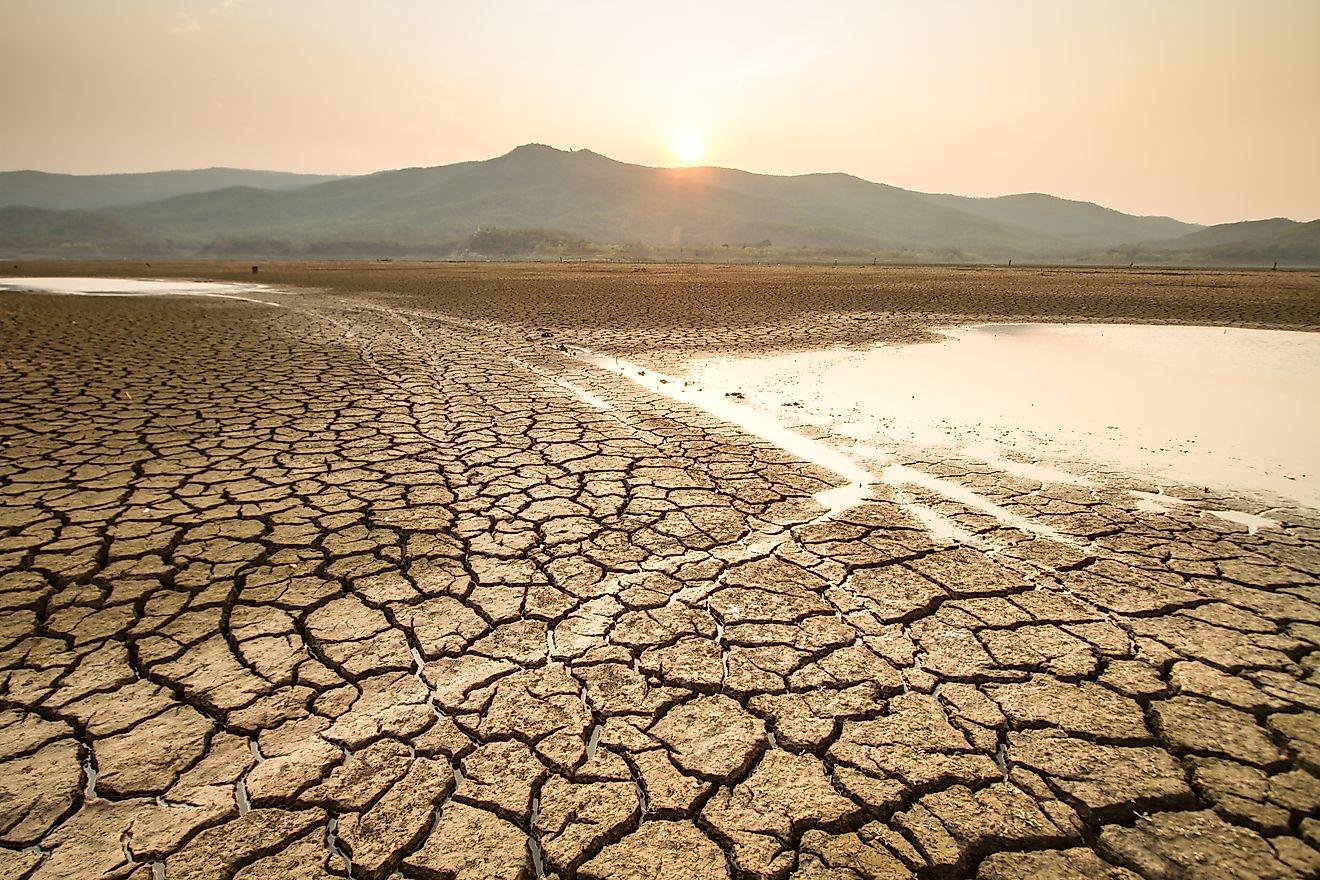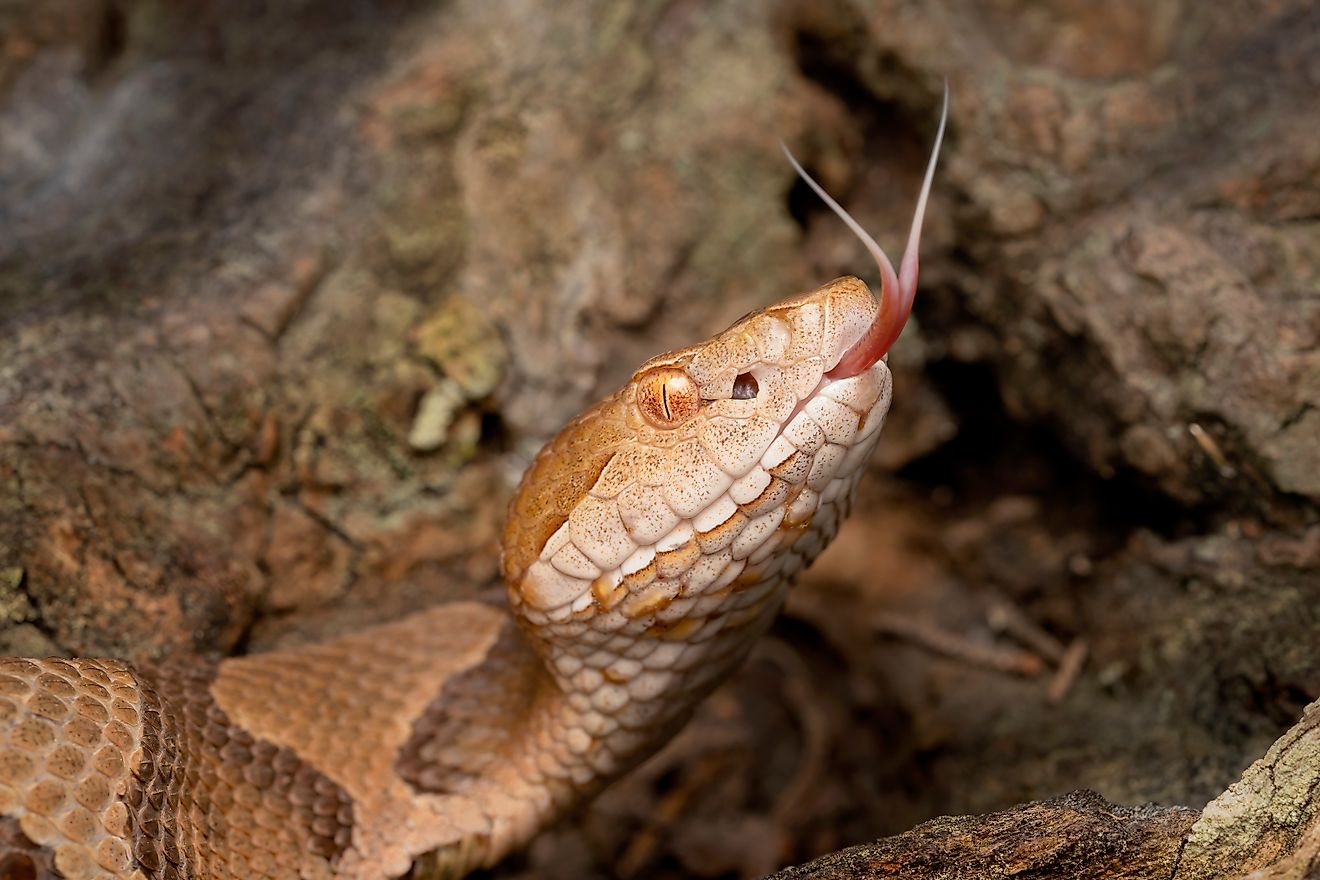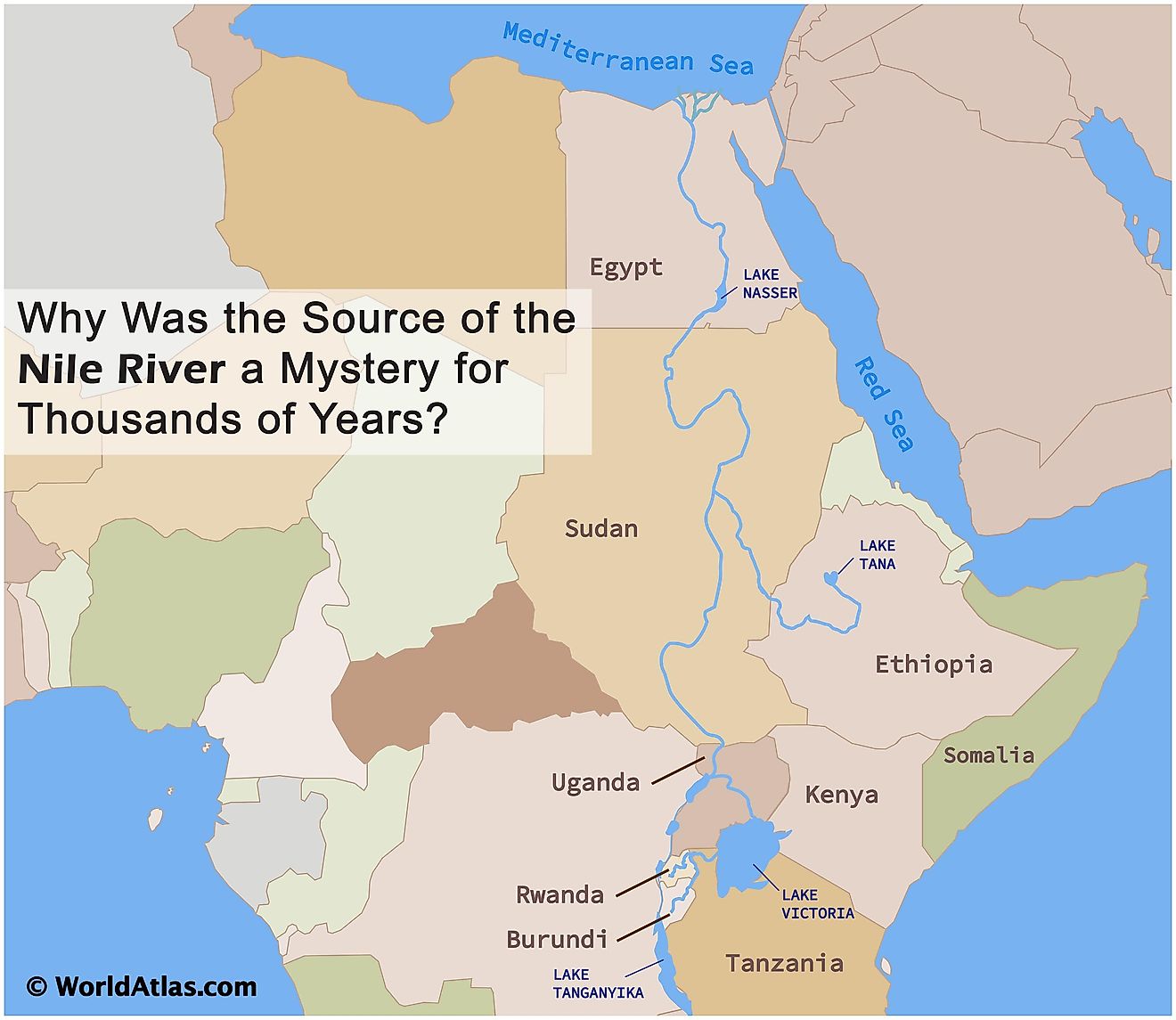
6 Most Alligator Filled Rivers In The United States
The United States is the primary home of the American alligator, and some of its rivers particularly provide excellent opportunities to see these reptiles in the wild. From slow-moving southern waterways to expansive floodplain systems, certain American riverways host highly abundant populations, supported by connecting wetlands, lakes, and marshes. These habitats offer alligators their food, shelter, and nesting grounds, while seasonal conditions often create ever-shifting ecosystems that cause these creatures to move around plenty.
Understanding which of these locations sustains the largest and most active populations highlights both the ecological importance of freshwater systems and the best spots for observing alligators safely.
St. Johns River, Florida
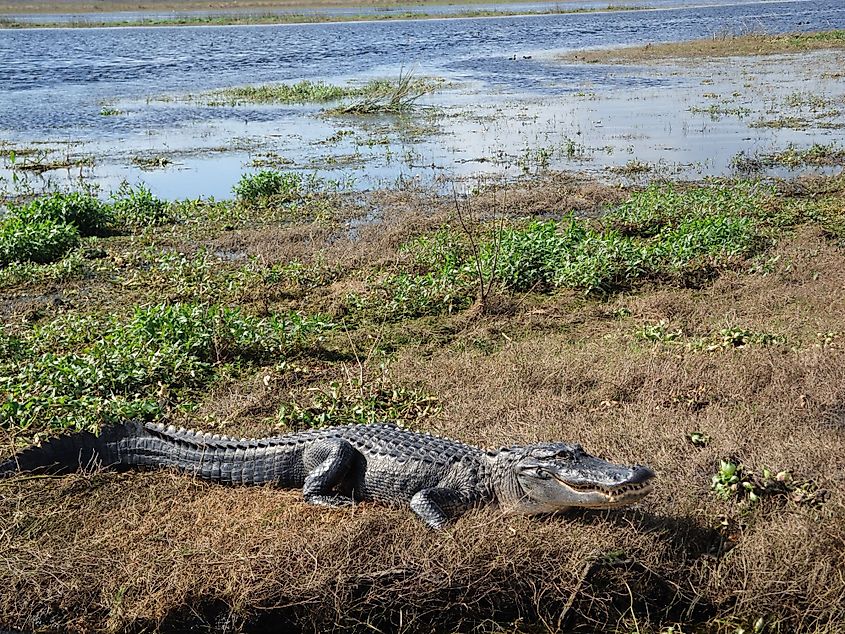
The St. Johns River, stretching around 310 miles through eastern Florida, is widely considered one of the country's most alligator-dense waterways. This slow-moving, blackwater river provides ideal conditions for reptiles, with its warm shallows, extensive marshes, plentiful fish populations, and Florida's sun-soaked climate.
The river’s protected wetlands and adjoining lakes create year-round habitat for both breeding and feeding, and as one of Florida’s longest rivers, the St. Johns serves as both a vital ecological corridor for all other flora and fauna that call it home.
Wildlife officials estimate tens of thousands of alligators inhabit the St. Johns system, including some of the largest in the state, with sightings common from Lake George south to Blue Spring and along the river’s numerous tributaries. See it for yourself with an airboat tour or a guided fishing excursion, both of which frequently cross paths with gators sunning along the banks or swimming across channels.
Pascagoula River Basin, Mississippi
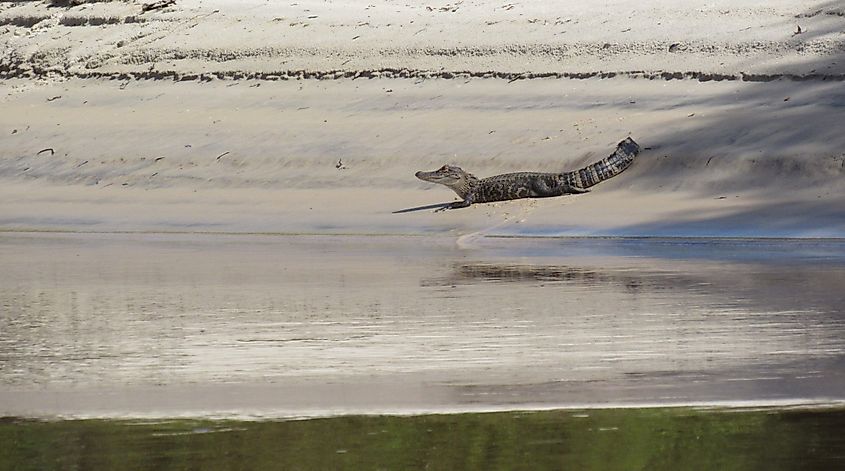
The Pascagoula River Basin in southern Mississippi is a prime habitat for American alligators, supporting one of the largest concentrations on the Gulf Coast. The river flows nearly 80 miles before emptying into the Gulf of Mexico (Gulf of America), with numerous swamps, bayous, and oxbow lakes along its course that provide ideal conditions for nesting and hunting. Seasonal fluctuations in water levels further create productive feeding grounds for juveniles and adults alike.
The basin’s relatively undeveloped landscape also helps maintain minimal human disturbance, allowing alligators to thrive and making it easy for wildlife biologists to regularly document them. Its meandering waters and dense wetlands offer both abundant food and shelter, sustaining stable populations, with some sources saying it holds 25% of the state's gators alone!
Pearl River, Louisiana

The Pearl River flows through southeastern Louisiana into the Mississippi Sound, cutting across cypress swamps, backwater lakes, and coastal marshes. Its mix of freshwater and brackish zones supports a dense alligator population, particularly in quieter side channels and oxbow lakes where gators can hunt fish and small mammals with minimal disturbance.
Unlike much more heavily developed rivers nearby, a lot of the Pearl remains largely untouched, allowing alligators to maintain natural behaviors and allowing researchers and local guides to document large individuals in their natural habitats along its countless bends. Varying flood periods throughout the year are also known to expand shallow feeding areas and expose sandbars for nesting, creating highly dynamic habitat conditions in this lively river.
Savannah River, South Carolina and Georgia
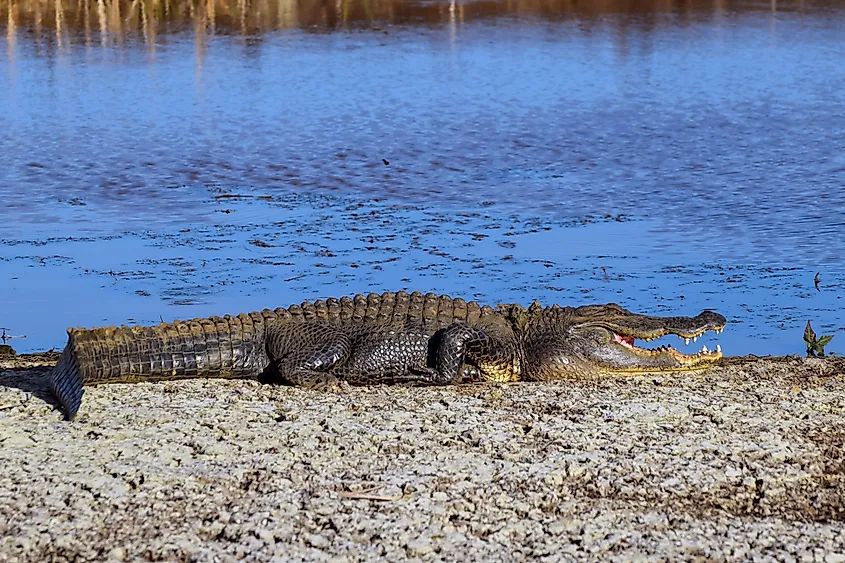
The Savannah River forms much of the border between Georgia and South Carolina, running nearly 315 miles from the Blue Ridge Mountains all the way to the Atlantic. Its lower stretches, where tidal influence mixes with freshwater, host extensive marshes, swamps, and nearby lakes that host significant numbers of alligators. These bodies of water provide both food sources and breeding areas, with younglings taking advantage of quieter backwaters while adults patrol the deeper channels.
Human activity on this river is concentrated near urban centers like Savannah, but upstream stretches remain relatively undisturbed. Biologists commonly report sightings in these along less-traveled zones, with their adjoining creeks and wetlands, making the Savannah River a key corridor for alligator movement, and an important location for observing these reptiles in a variety of freshwater habitats.
Brazos River, Texas
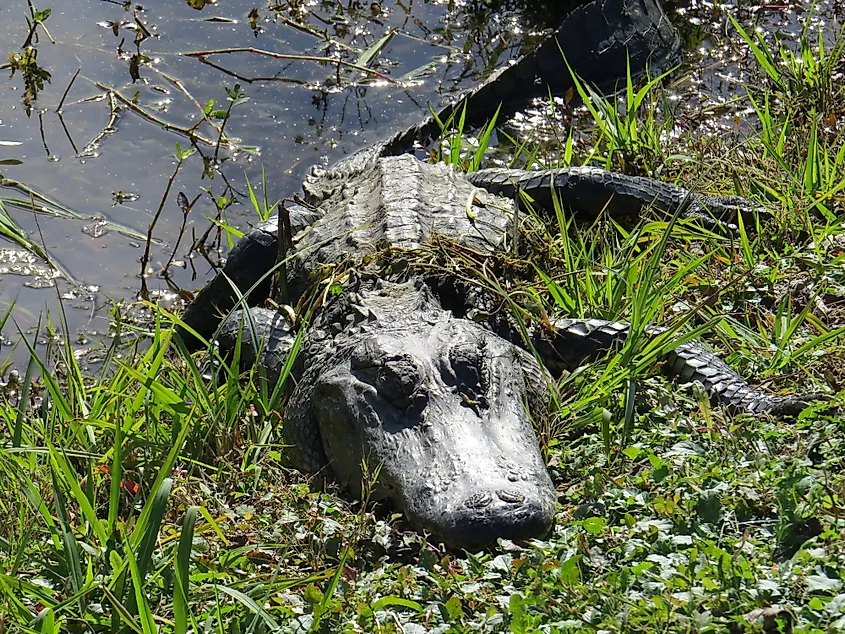
The Brazos River, one of Texas’ longest rivers, runs around 1,280 miles from the state's panhandle to the Gulf of Mexico, passing through lakes, bottomland forests, and slow-moving stretches that provide habitat for a huge variety of reptiles, including, of course, alligators.
Populations here are most concentrated in the river’s lower reaches, where wetlands and oxbow lakes create shallow feeding areas and spaces to rest and nest in. And unlike many rivers in the Deep South, the Brazos maintains consistent water levels in its lower sections, which helps sustain resident alligators year-round.
While human development has altered some sections, extensive public lands and wildlife management areas allow these reptiles to largely maintain natural behaviors. Regular observations along the river’s bends, reservoirs, and backwaters make the Brazos a notable Texas river for encountering alligators in a diversity of freshwater environments in a state that otherwise doesn't have many.
Waccamaw River, North and South Carolina
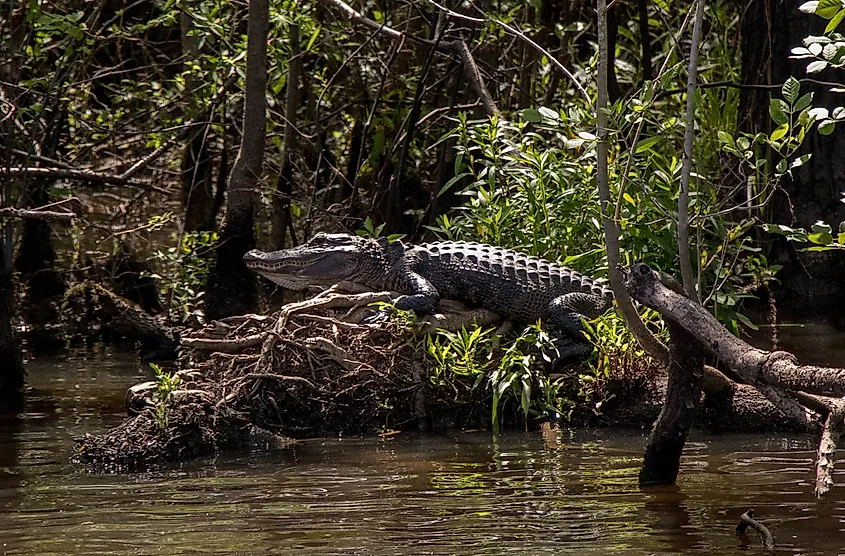
The Waccamaw River runs from North Carolina’s coastal plain into South Carolina, winding through one of the Southeast’s most biologically rich blackwater ecosystems. Its dark, tannin-stained waters flow through notable cypress and tupelo swamps, creating prime conditions for alligators to live in. Moreover, the river’s floodplain offers abundant fish and small amphibians for food, and nesting areas to breed in, while quiet back channels give juveniles protection from predators.
Much of the surrounding land is also part of the Waccamaw National Wildlife Refuge, ensuring minimal human interaction (besides the brave adventurers who go in on foot or boat). If you do visit, you'll probably spot alligators sunning along logs and banks, particularly near the refuge’s oxbows and meandering bends.
Know Where the Find America's Most Alligator-Populated Places
Across the southern half of the United States, a web of rivers, lakes, and other waterways remains the main stronghold for the American alligator, sustaining populations that reflect eons of adaptation to the region's shifting conditions. From the dark waters of the Waccamaw to the broad reaches of the St. Johns, these ecosystems link diverse wildlife, water quality, and growing human development together for an ever-changing landscape in which these large reptiles seem to still thrive in. Protecting these habitats ensures both ecological balance and safer opportunities for public viewing.
